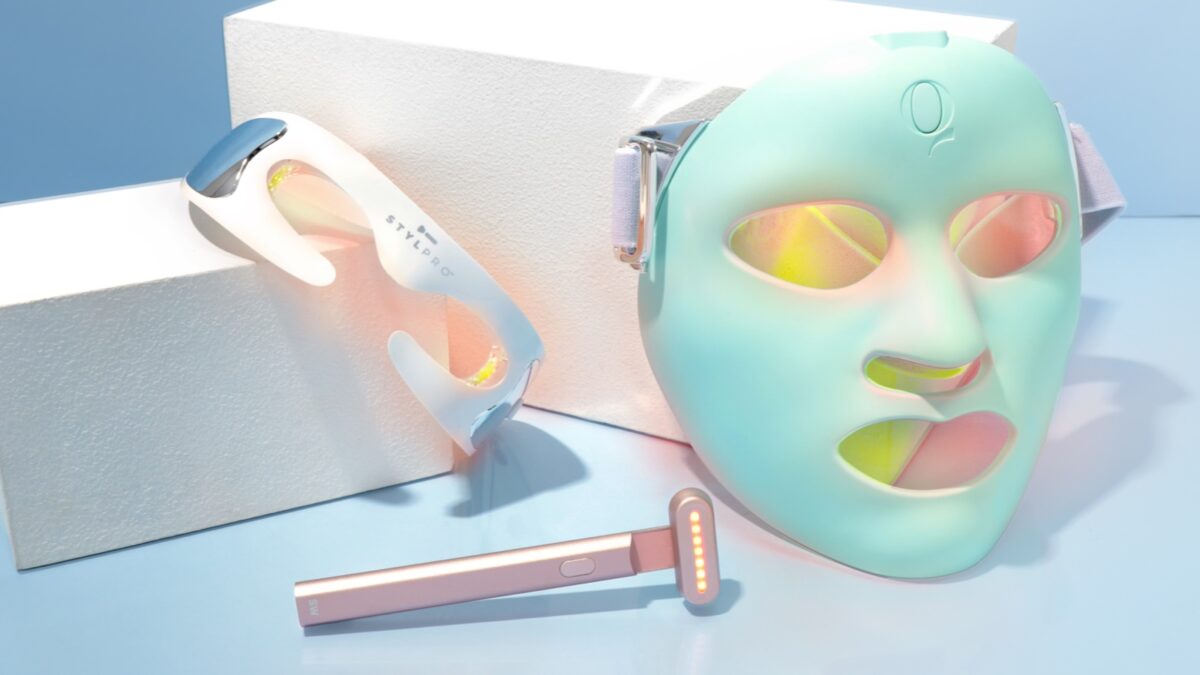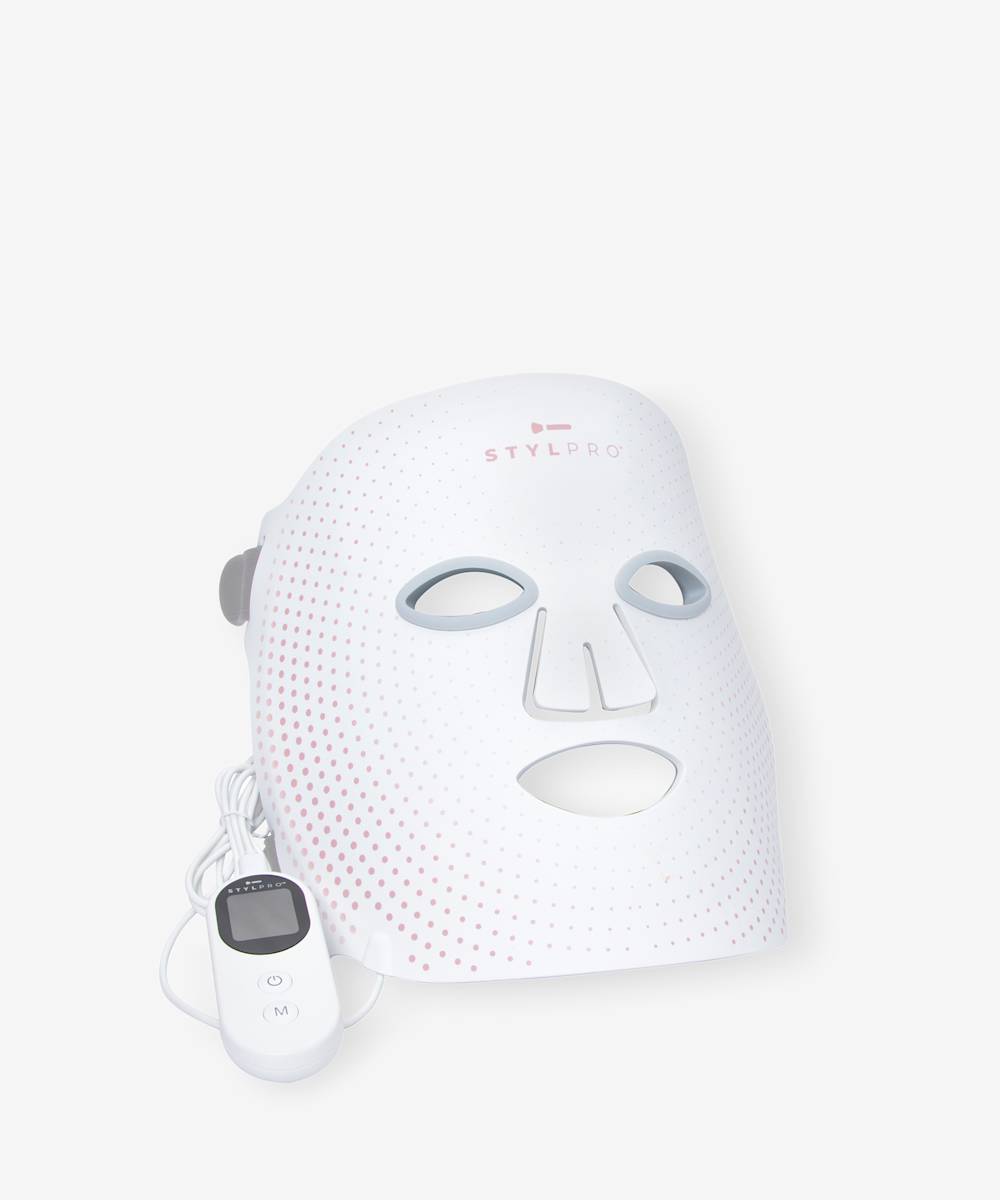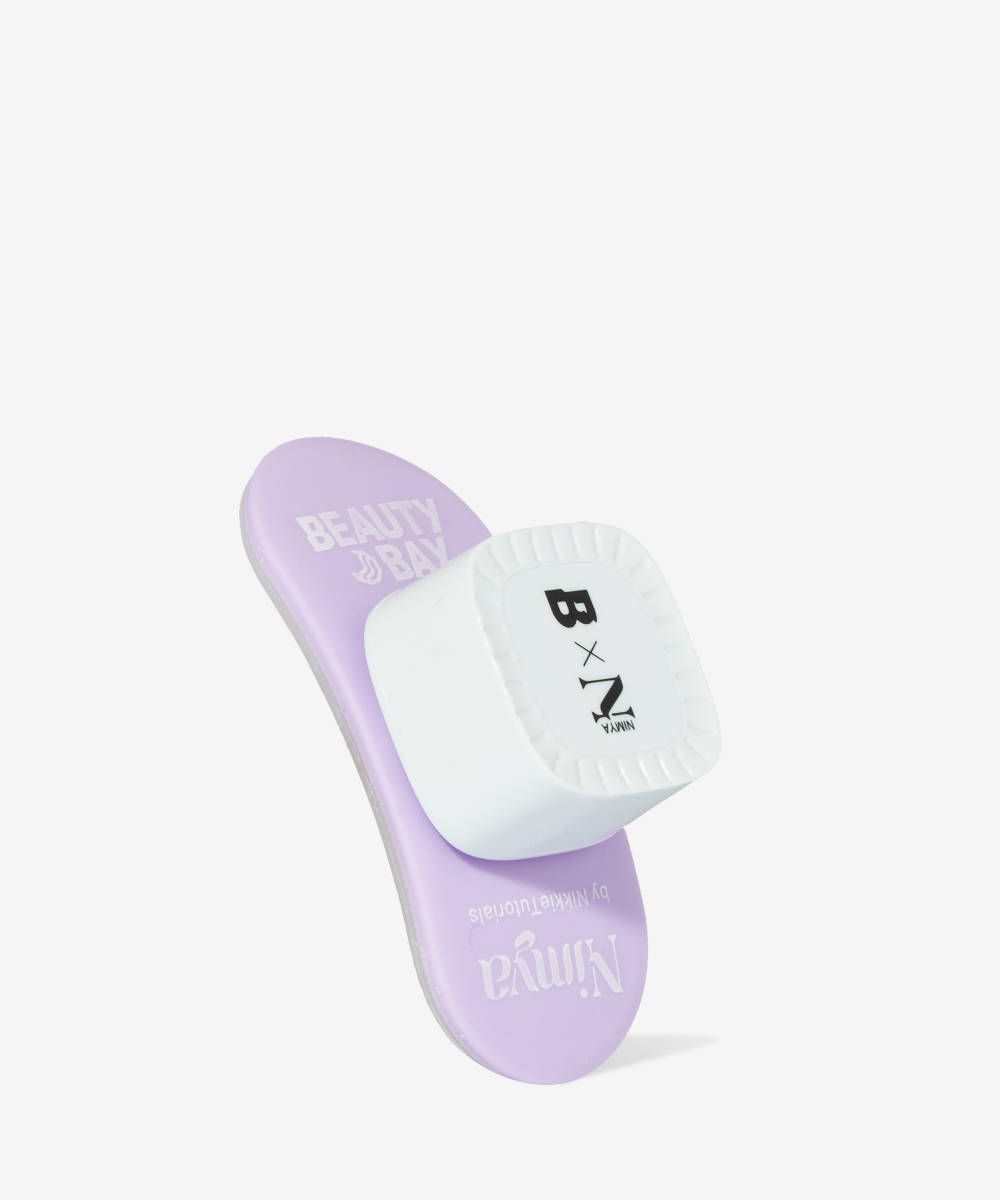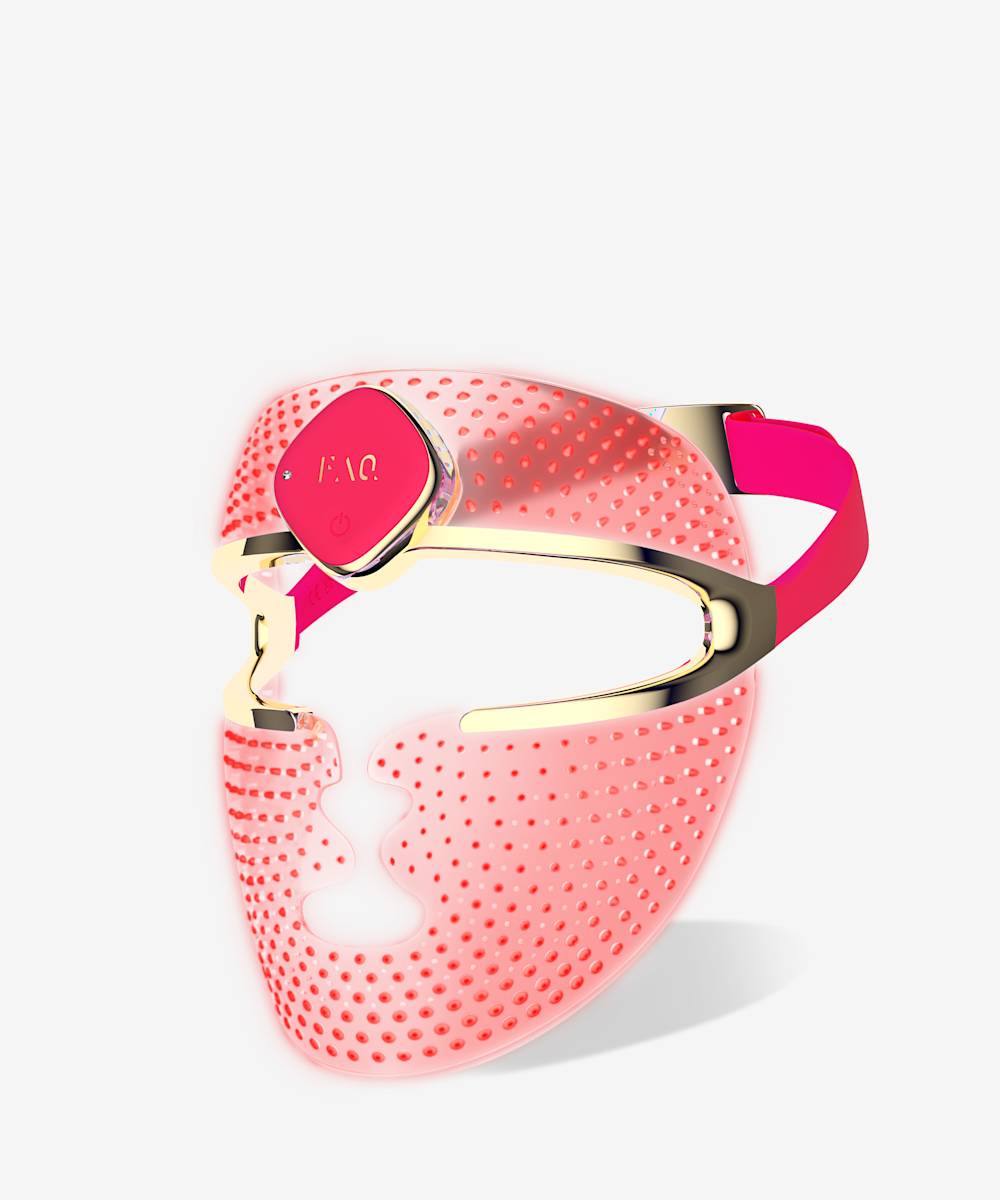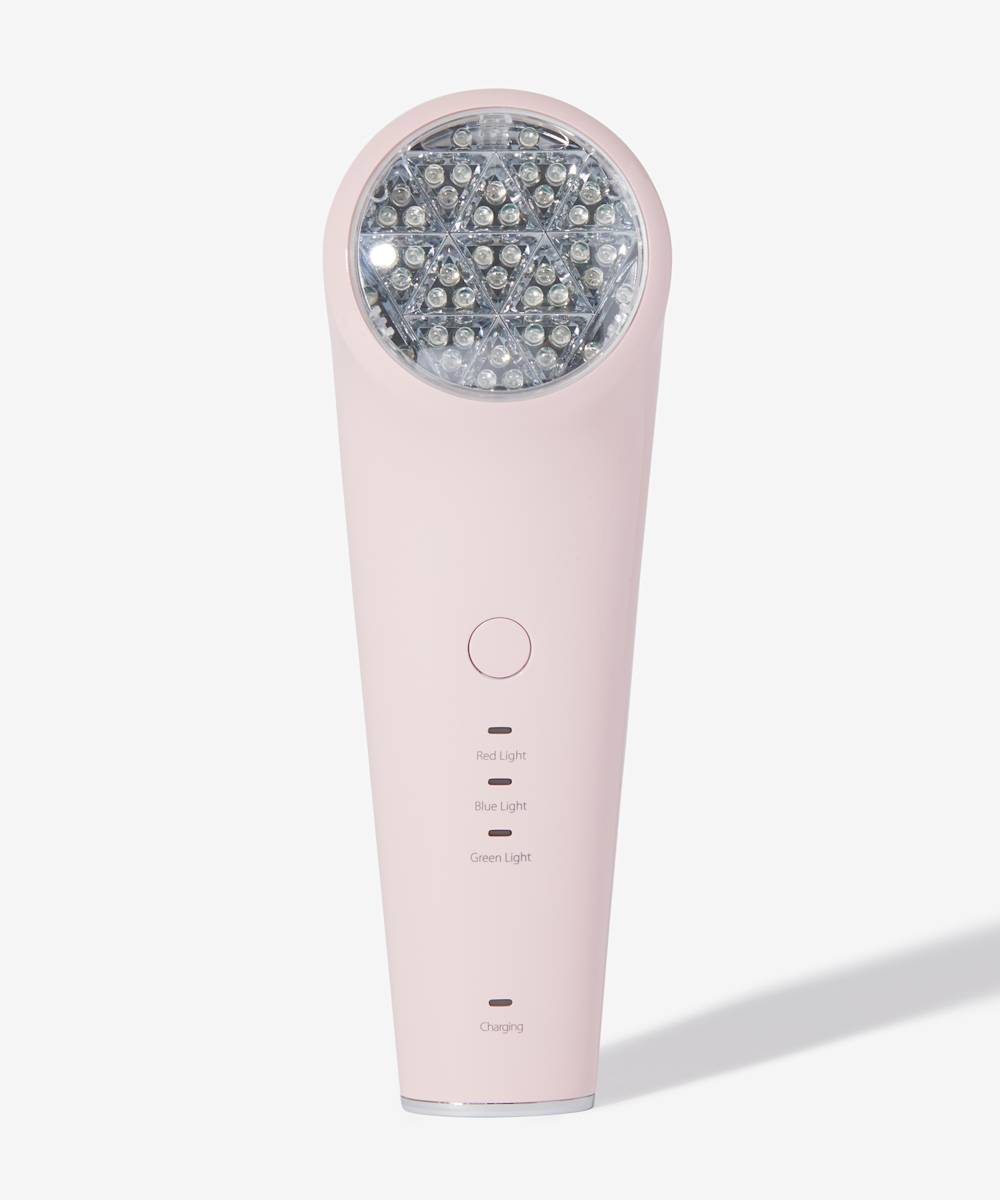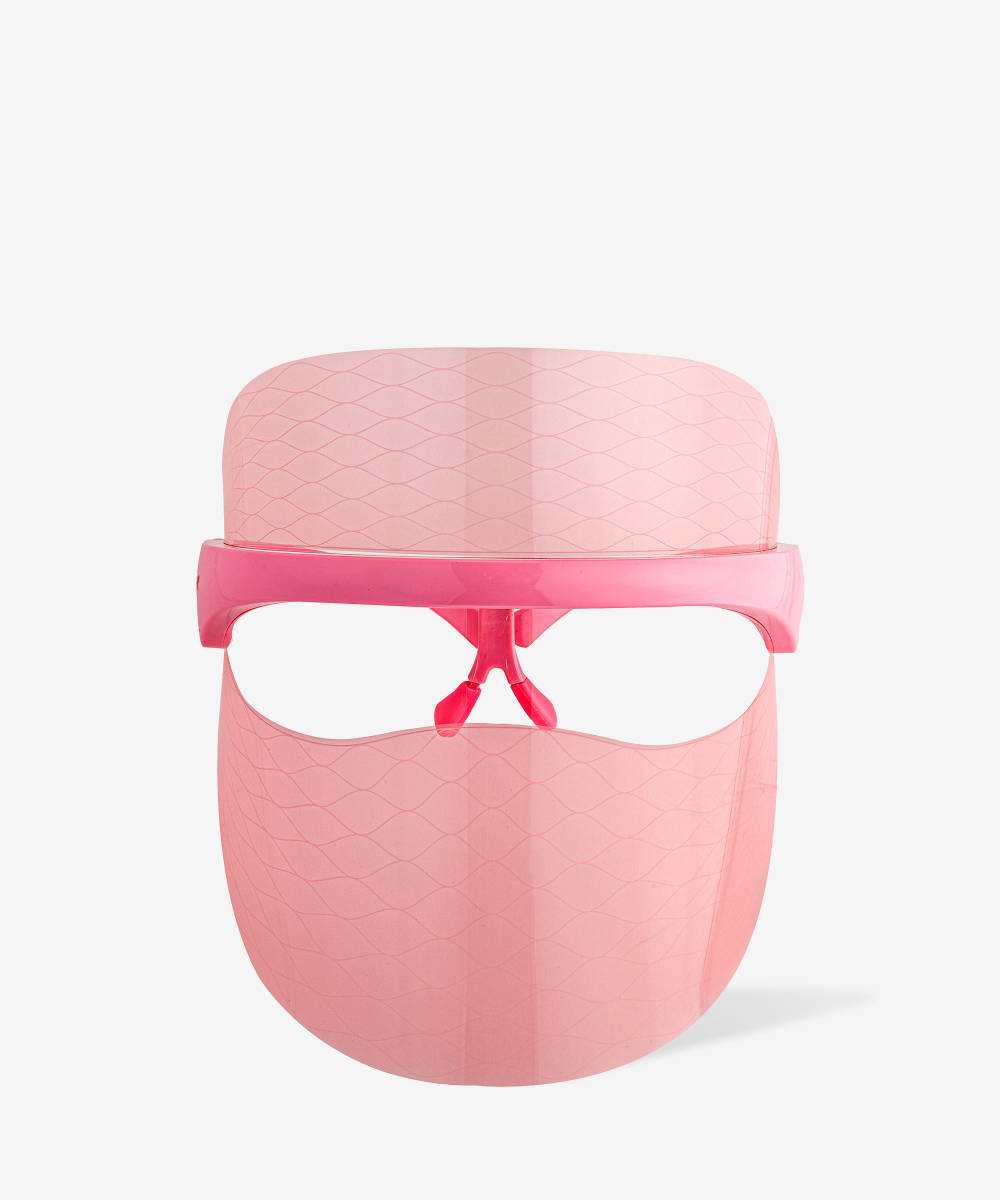LED light therapy for skin was once a skincare treatment reserved for only salons and skin professionals, but now it’s become a staple in many of our skincare routines. But why is everyone raving about LED face masks and skin therapy? And does light therapy actually work for skin?
From the light therapy skin benefits, to the different colours available for varying skin concerns, we’re delving into everything there is to know. And for those wanting to try the skincare tool, we’ve got a whole shiny host of LED masks and LED tools for you to choose from at BEAUTY BAY. Cue the at-home spa night.
What is LED skincare?
Light-emitting diode therapy, more commonly known as LED skin therapy, is used in skincare to promote smoother skin, enhance moisture, and reduce wrinkles, pigmentation, and acne. It uses low-level, skin-safe light, so LED light for skin is completely non-invasive.
It works by entering the skin’s layers and using specific wavelengths of light to trigger cellular reactions and biological processes in the skin – very similar to the way plants use chlorophyll to convert light into plant tissue. The result is either a damaged cell repairing itself or a functional cell performing more efficiently, which over time leads to healthier and healed skin.
Some of our favourite LED Light Therapy Devices for Skin
What does LED do for skin?
When used consistently and correctly, LED light therapy can have noticeable and beneficial results. Although it won’t always provide 100% improvement for some, when regularly used it can help tackle skin concerns. And skin can be left plump, glowy, with reduced acne, and with fewer signs of ageing.
But depending on your skin concern, there are different types of light therapy which tackle different concerns and leave you with different results. Here’s what to expect from different LED light colours:
– Blue light therapy: eliminates acne-causing bacteria
– Red light therapy: stimulates collagen production
– Purple light therapy: combines the benefits of red and blue light therapy
– Yellow light therapy: brightens, soothes, and targets pigmentation
– Green light therapy: evens skin tone and reduces dark spots
What Does Blue LED Light Do for Your Skin?
Best for: Eliminating acne-causing bacteria
How it works: Blue light therapy can be used to reduce acne and sebaceous hyperplasia (a harmless skin condition that’s essentially enlarged oil glands.) It works by eliminating the bacteria found in the oil glands in the skin to help your skin heal and prevent more breakouts from occurring. However, if you suffer from hormonal acne, blue light therapy may not be as effective or long-lasting for you.
Our recommendations: The Solawave Anti-Breakout Skincare Wear with Blue Light Therapy is specifically designed for acne-prone skin and can leave you with noticeable results after just 5 minutes of consistent use per day. It combines blue light therapy, therapeutic warmth, and facial massage to fight breakouts, improve skin radiance, and boost the effect of serums.
The Qure Skincare Q-Rejuvalight Pro Facewear mask is also a favourite of ours (this is the Natalie O’Neill face mask and a VOGUE favourite too, so you know it’s good.) It uses five different light settings, so you can tackle a variety of skin concerns, but you only need to use it for three minutes per day consistently to see results. So, it’s perfect for anyone with persistent acne as it’s a minimal effort product that delivers maximum results.
What Does Red LED Light Do for Your Skin?
Best for: Stimulating collagen production
How it works: Ideal for anyone wanting to target the signs of ageing, red light therapy promotes collagen production and skin elasticity to smooth skin and reduce the appearance of fine lines and wrinkles. It works by stimulating the skin’s natural healing and rejuvenation processes in a non-invasive way. So it also reduces inflammation, speeds up wound healing, and improves overall skin tone and texture.
Our recommendation: If you’re after something to target crow’s feet, under-eye wrinkles, frown lines and dark circles specifically then the STYLIDEAS STYLPRO Radiant Eyes Red LED Light Goggles are just the ticket. Using red light therapy to leave skin smoother, firmer, tighter, and less puffy around the eyes, it even shuts automatically after 10 minutes for safe use.
The Solawave Advanced Skincare Wand with Red Light Therapy is an aesthetician-approved (magic) wand that combines red light therapy, microcurrent, therapeutic warmth, and facial massage. Leaving you with the tight and smooth skin you expect from red light therapy, just 5 minutes a day of consistent use will give you results. And for a red light LED tool that treats your whole face, try the STYLIDEAS STYLPRO Wavelength LED Face Mask. It’s handsfree and has a flexible silicone design and four different modes, so you can target more than one skin concern at a time.
What Does Purple LED Light Do for Your Skin?
Best for: Combining the benefits of red and blue light therapy
How it works: To reap the benefits of red and blue light therapy, purple light is your best bet. It combines the acne-causing bacteria elimination of blue with the collagen stimulation of red light, to reduce acne, acne scars, and the signs of ageing as well as rejuvenating skin.
Our recommendation: The BEAUTYPRO Photon LED Light Therapy Mask uses purple LED light therapy to improve blood circulation, target acne and blemishes, reduce inflammation, and help against free radicals. For the best results, it’s recommended to use this device three times a week for 20 minutes per use. This mask also has red and blue light therapy settings, as well as yellow LED light therapy for brightening and near infrared LED light therapy for pore refining.
What Does Green LED Light Do for Your Skin?
Best for: Evening skin tone and reducing dark spots
How it works: Green LED light therapy works by targeting melanin production, which is a substance in the body that produces hair, eye, and skin pigmentation. If you have hyperpigmentation or dark spots, which are caused by an overproduction of melanin in the skin, then green light therapy can help to reduce these and even out your overall skin tone.
Our recommendation: It might be one of the more expensive LED face masks, but the FOREO FAQ™ 201 is worth the investment. Comfortable to wear as it perfectly fits your face, it’s lightweight enough to wear whilst you go about your day around the house. Although it features effective red and blue light settings, this mask is one of our favourites for its green light setting in particular, which can be hard to come by. Working to brighten skin and even out dull skin tones, say hello to a healthier looking complexion in a matter of weeks.
Another LED green light tool we love here at BEAUTY BAY is the Skin Gym Revilit LED Light Therapy Wand. It glides across the skin effortlessly, so you can target specific areas of your face, neck, and body quickly and easily. As well as green light therapy, it also has red and blue light settings, letting you target other skin concerns. It’s recommended to use this tool 2-4 times a week for the best results.
What Does Yellow LED Light Do for Your Skin?
Best for: Brightening, soothing, and targeting pigmentation
How it works: For dull skin that needs brightening and redness reducing, yellow LED light therapy is the best solution. It works by calming and soothing skin to leave you with a healthy, radiant complexion. It’s perfect for those with sensitive or reactive skin, and can even boost lymphatic flow which eliminates toxins and waste to support ageing.
Our recommendation: The Skin Gym WrinkLit LED Mask uses yellow LED light therapy to boost your skin’s glowiness, brighten the skin’s surface, and target pigmentation concerns. It also features red and blue LED light therapy settings to cover a batch of skin concerns like promoting age support and helping to tackle acne breakouts.
How to Use LED Skincare Devices
Depending on the LED skincare device you’ve chosen, instructions will vary when it comes to how best to use them, so it’s best to check. Some devices recommend everyday use to see noticeable results. But others will suggest weekly use.
It’s important to cleanse your skin first so it’s clean and free of any impurities, makeup, and SPF. However, it’s best to wait until after you’ve used your LED mask to apply serums, toners, and moisturisers, so that the light therapy can penetrate fully and there’s no barrier between your skin and the mask. So be sure to apply your mask onto cleansed, dry skin.
